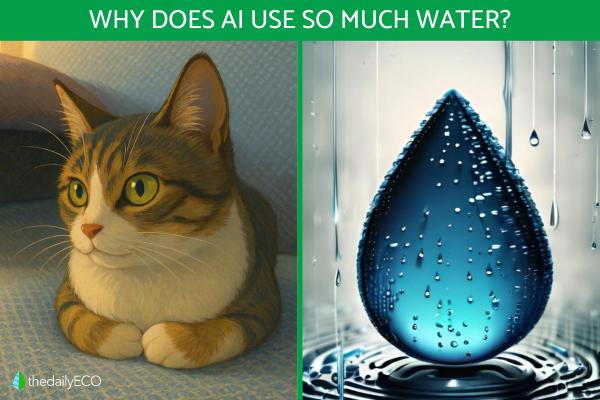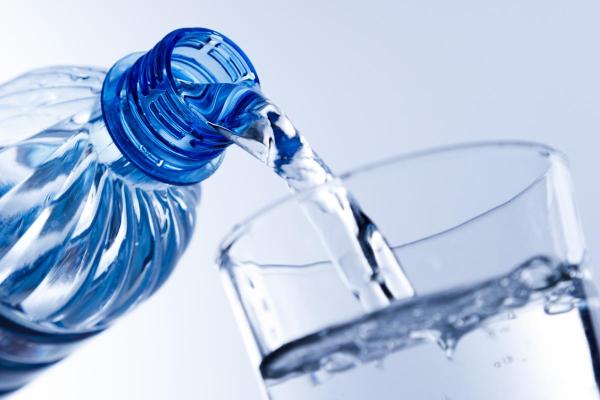
Artificial intelligence has revolutionized multiple industrial sectors, with further innovation appearing at a staggering rate. The generation of capital, opportunities and solutions to various problems are exciting. They have the potential to benefit societies in many ways, especially in areas such as medical advancements. Equally, AI has the potential to exploit and create greater inequality in society. Debating the potential benefits versus detriments is something which affects many aspects of our society, but it the use of AI may also threaten our ecosystems. Learn more with thedailyECO as we ask why does AI use so much water?
Why does artificial intelligence need water?
Artificial intelligence (AI) is commonly accessed via electronic devices such as computers and cell phones. While we don't think that doing so will deplete water reserves, this is not quite the case. Artificial intelligence itself doesn't consume water directly, but the infrastructure that supports AI does.
The infrastructure includes data centers, massive complexes that house servers. These servers require a large amount of energy to operate and generate an intense amount of heat while doing so. To prevent overheating and ensure the continuous operation of the servers, cooling systems are used. In many cases, these cooling systems rely heavily on water. This is especially important in high-energy-demand processes such as training AI models.
Although some alternative cooling solutions are being developed, most data centers today still rely on water to keep their systems running safely. The increasing demand for AI involves running increasingly large and complex models. This drives up the need for cooling, in turn increasing water consumption in data centers.

How much water does AI need?
Water consumption in artificial intelligence is considerable, especially in data centers that process large volumes of data. To cool the servers that power these systems, it is estimated that a data center can consume up to 1.5 million liters of water per day. When put into perspective, it is equivalent to more than 6 million 250ml glasses of water in a single day.
Consumption skyrockets when generating complex digital content, such as generating images in different styles through AI. In just a few days, approximately 216 million liters of water have been consumed to generate Ghibli-style images. This is because cooling has been use to operate the infrastructure that enables the creation of this type of content on platforms like ChatGPT. This volume of water is enough to fill more than 860,000 bathtubs.
In terms of image generation, it's estimated that each AI-generated image can consume between 2 and 5 liters of water. This consumption is related to the energy and cooling required to process and store the images.
In our related guide, discover how to make a homemade water filter for drinking water.
Impact of Ghibli-style images on AI water consumption
The generation of Ghibli-style images using ChatGPT has sparked intense ethical and environmental debate. These images require a high consumption of resources, such as electricity and water. The result is considerable ecological impact. As mentioned above, each image generated consumes between 2 and 5 liters of water. In terms of electricity, it is estimated to consume around 300 watt-hours, the equivalent energy consumption of a 100-watt incandescent light bulb for three hours.
From an ethical perspective, many graphic artists and digital creators feel threatened by the use of AI to emulate iconic art styles. These include those of Studio Ghibli, as well as other popular animation styles such as Pixar. Studio Ghibli founder Hayao Miyazaki has called AI-generated art “an insult to life itself”. His stance reflects the disdain many artists feel toward systems that replicate their work without compensation or consent.

How to reduce AI water and energy consumption
As a user of artificial intelligence, there are several ways we can reduce its environmental impact and use it more responsibly:
- Use AI sparingly: avoid generating unnecessary or excessive content. When creating images or text, ask yourself if you really need high-quality content or if a simpler option would suffice.
- Opt for lightweight options: if you're using AI to generate images or heavy content, consider choosing configurations that don't require as much processing power, such as medium or low-resolution images. This reduces the load on your servers and reduces power consumption.
- Leverage specific features: limit the use of automated or background features of AI tools, especially those that generate content without requiring intervention. This will help avoid unnecessary resource expenditure.
- Choose sustainable platforms: whenever possible, select AI services that use renewable energy or promote carbon-reducing practices.
- Promote the ethical use of AI: as you interact with AI tools, support and promote the ethical use of these technologies. This includes being mindful of the environmental impact and supporting platforms that respect the rights of content creators and encourage responsible practices.
Now that you know why AI consumes so much water, don't miss these articles asking what are water resources and what is water stress?
If you want to read similar articles to Why Does AI Use So Much Water?, we recommend you visit our Environment (other) category.